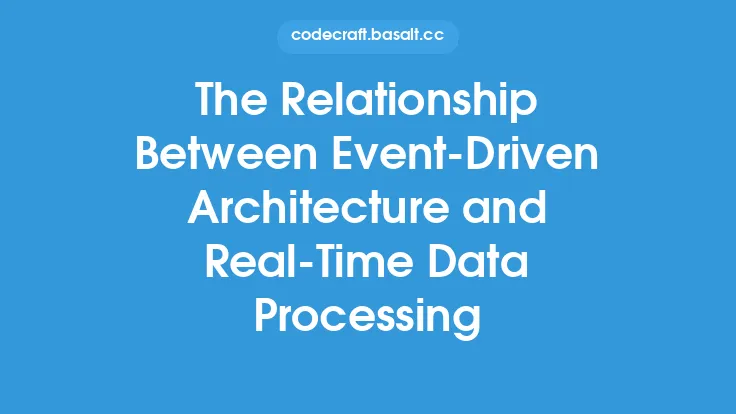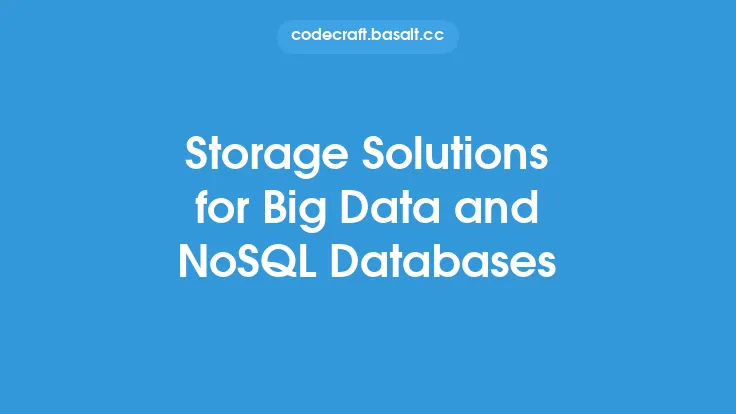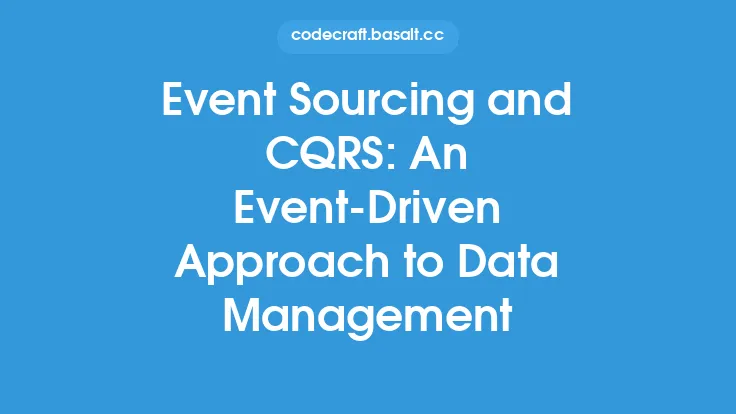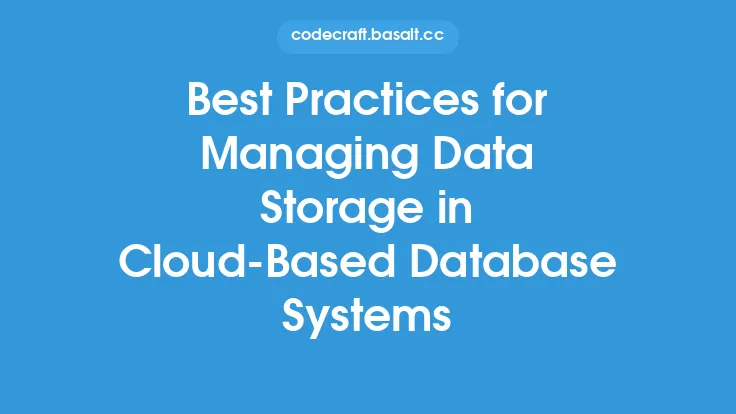When it comes to real-time data processing and analytics, one of the most critical components is data storage. The ability to store and manage large amounts of data in a way that allows for fast and efficient processing is essential for many modern applications, including financial trading, IoT sensor data, and social media analytics. In this article, we will explore the key considerations for data storage in real-time data processing and analytics, including the types of data storage, data models, and storage architectures.
Types of Data Storage
There are several types of data storage that can be used for real-time data processing and analytics, each with its own strengths and weaknesses. The most common types of data storage include relational databases, NoSQL databases, and in-memory data grids. Relational databases, such as MySQL and PostgreSQL, are well-suited for storing structured data and supporting complex queries. NoSQL databases, such as MongoDB and Cassandra, are designed for storing large amounts of unstructured or semi-structured data and provide high scalability and performance. In-memory data grids, such as Apache Ignite and Hazelcast, store data in RAM, providing extremely fast access times and making them ideal for applications that require low-latency data processing.
Data Models
The data model used in real-time data processing and analytics is also critical. The most common data models include the relational model, the document-oriented model, and the key-value model. The relational model is based on the concept of tables, rows, and columns, and is well-suited for storing structured data. The document-oriented model stores data in self-contained documents, such as JSON or XML files, and is ideal for storing semi-structured or unstructured data. The key-value model stores data as a collection of key-value pairs, and is often used in NoSQL databases and in-memory data grids.
Storage Architectures
The storage architecture used in real-time data processing and analytics can have a significant impact on performance and scalability. The most common storage architectures include the shared-nothing architecture, the shared-disk architecture, and the distributed architecture. The shared-nothing architecture, where each node in the cluster has its own storage, is well-suited for applications that require high scalability and performance. The shared-disk architecture, where all nodes in the cluster share a common storage device, is often used in relational databases and provides high data consistency and integrity. The distributed architecture, where data is split across multiple nodes in the cluster, is ideal for applications that require high availability and fault tolerance.
Data Ingestion and Processing
Data ingestion and processing are critical components of real-time data processing and analytics. Data ingestion refers to the process of collecting and storing data from various sources, such as sensors, logs, and social media feeds. Data processing refers to the process of transforming and analyzing the ingested data to extract insights and meaningful information. The most common data ingestion tools include Apache Kafka, Apache Flume, and Apache NiFi, while the most common data processing tools include Apache Spark, Apache Flink, and Apache Storm.
Data Retrieval and Querying
Data retrieval and querying are also essential components of real-time data processing and analytics. Data retrieval refers to the process of accessing and retrieving stored data, while querying refers to the process of asking questions and extracting insights from the retrieved data. The most common data retrieval and querying tools include SQL, NoSQL query languages, and data visualization tools such as Tableau and Power BI.
Scalability and Performance
Scalability and performance are critical considerations for real-time data processing and analytics. The ability to handle large amounts of data and scale to meet growing demands is essential for many modern applications. The most common techniques for improving scalability and performance include data partitioning, data replication, and load balancing. Data partitioning involves splitting data across multiple nodes or devices, while data replication involves duplicating data across multiple nodes or devices. Load balancing involves distributing workload across multiple nodes or devices to improve responsiveness and throughput.
Security and Compliance
Security and compliance are also essential considerations for real-time data processing and analytics. The ability to protect sensitive data and ensure compliance with regulatory requirements is critical for many modern applications. The most common security and compliance techniques include data encryption, access control, and auditing. Data encryption involves protecting data with encryption algorithms, while access control involves restricting access to authorized users and applications. Auditing involves monitoring and logging data access and modifications to ensure compliance with regulatory requirements.
Conclusion
In conclusion, data storage is a critical component of real-time data processing and analytics. The ability to store and manage large amounts of data in a way that allows for fast and efficient processing is essential for many modern applications. By understanding the different types of data storage, data models, and storage architectures, as well as the key considerations for data ingestion and processing, data retrieval and querying, scalability and performance, and security and compliance, organizations can build effective and efficient real-time data processing and analytics systems that meet their needs and drive business success.





